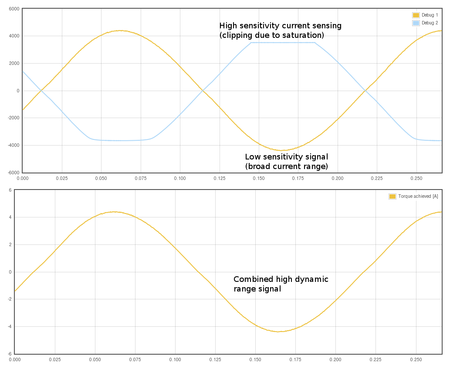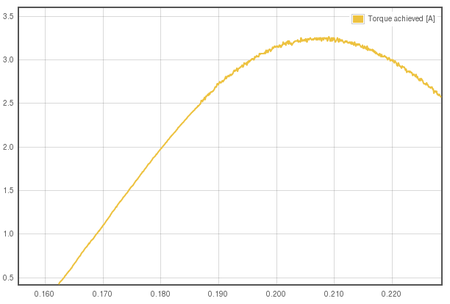High dynamic range torque control
Torque control is the most important single instrument present in modern motor drives. All operations drive does, are handled finally by a torque controller - even if motor is being operated in velocity or positioning modes.
High dynamic range torque control a.k.a. HDRT is a torque control technology built in VSD-E/XE series, Argon servo drive series as well as ION drive series. HDRT yields approximately 14 bits of torque resolution which is 16 times higher compared to standard 10 bit torque resolution found from an average drive. HDRT has been implemented by using on-the-fly adjusting current sensor gain control combined with low noise electronics and at least 16 bit digital signal path inside the drive.
Contributions
- Smoother, less jittering motion when combined with high resolution feedback
- Quieter operation, reduced noise from motor
- Allow supporting wide power range of motors within single drive
- All automatic & transparent - no configuration needed
How does HDRT work
HDRT is mainly based on high precision current sensing of motor coils. Motor coil current sensing is one of the most critical component in a well behaving motor drive. This is true because current readout data is being used as feedback signal for closed loop torque controller as motor torque is directly proportional to coil currents. The importance of good torque control can be understood by knowing the fact that the the final step in drive’s signal path is always a torque controller. This means, any error in current sensing will eventually reflect to motor shaft, no matter which control mode is being used.
One major motivator behind HDRT is to expand the range of motors that can be driven with single drive without exhibiting any of the typical drawbacks that come when a small motor is being driven with a large drive (motor hiss, jitter, torque ripple, position hunting). It also gives maximum precision for those who want the best performance in torque control mode.
Illustration of measured current signals from ION. Each phase current is measured in two channels: with high sensitivity and low sensitivity. The high sensitivity signal has higher precision but is limited to about +/-3.5A range. The low sensitivity signal has range of +/-23A but comes with less precision. The drive combines these two signals into one by making it both precise and high dynamic range.
In no event the Product Information or parts hereof shall be regarded as guarantee of conditions or characteristics. The Product Information or any part thereof may also not be regarded as a warranty of any kind. No liability of any kind shall be assumed by Author with respect to Product Information or any use made by you thereof, nor shall Author indemnify you against or be liable for any third party claims with respect to such information or any use thereof.
As content of this Wiki may be edited by user community, Granite Devices Oy or it's affiliates do not take any responsibility of the contents of this Wiki. Use information at your own risk. However, Granite Devices staff attempts to review all changes made to this Wiki and keep information trustworthy.
Without written consent, Granite Devices' Products or Intellectual Property shall not be used in situations or installations where living beings, material property, or immaterial property could be harmed by the operation, features or failures of Product. Products may only be used in a way where hazards like moving parts, electric shock, laser radiation, or fire can't be realized even if the content of this Wiki would suggest otherwise.


